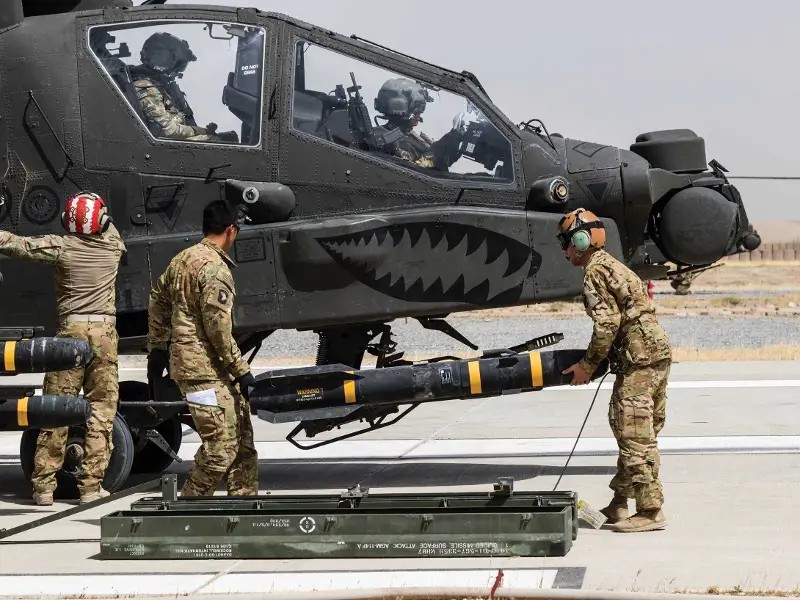Lockheed Martin Missiles and Fire Control, Orlando, Florida, was awarded a $101,332,412 modification to contract for procurement of AGM-114 Hellfire II Air-to-surface missiles and containers. Work will be performed in Orlando, Florida, with an estimated completion date of Sept. 30, 2024. Fiscal 2019, 2020 and 2021 procurement, defense-wide funds; and 2010 Foreign Military Sales (Indonesia, Greece, United Arab Emirates and Kuwait) funds in the amount of $101,332,412 were obligated at the time of the award. U.S. Army Contracting Command, Redstone Arsenal, Alabama, is the contracting activity.
The AGM-114 Hellfire is an air-to-surface missile (ASM) first developed for anti-armor use, but later models were developed for precision drone strikes against other target types, and have been used in a number of actions aimed to “destroy high-value targets.” It was originally developed under the name Heliborne laser, fire-and-forget missile, which led to the colloquial name “Hellfire” ultimately becoming the missile’s formal name. It has multi-mission, multi-target precision-strike ability, and can be launched from multiple air, sea, and ground platforms, including the Predator drone.

The development of the Hellfire Missile System began in 1974 with the United States Army requirement for a “tank-buster”, launched from helicopters to defeat armored fighting vehicles.Most variants are laser guided, with one variant, the AGM-114L “Longbow Hellfire”, being radar guided. Laser guidance can be provided either from the launcher, such as the nose-mounted opto-electronics of the AH-64 Apache attack helicopter, other airborne target designators or from ground-based observers, the latter two options allowing the launcher to break line of sight with the target and seek cover.
The Hellfire missile is the primary 100-pound (45 kg) class air-to-ground precision weapon for the armed forces of the United States and many other nations. Each Hellfire weighs 47 kilograms (104 lb), including the 9 kilograms (20 lb) warhead, and has a range of 7.1–11 kilometres (4.4–6.8 mi) depending on trajectory. The AGM-114R “Romeo” Hellfire II entered service in late 2012. It uses a semi-active laser homing guidance system and a K-charge multipurpose warhead to engage targets that previously needed multiple Hellfire variants. It will replace AGM-114K, M, N, and P variants in U.S. service.















